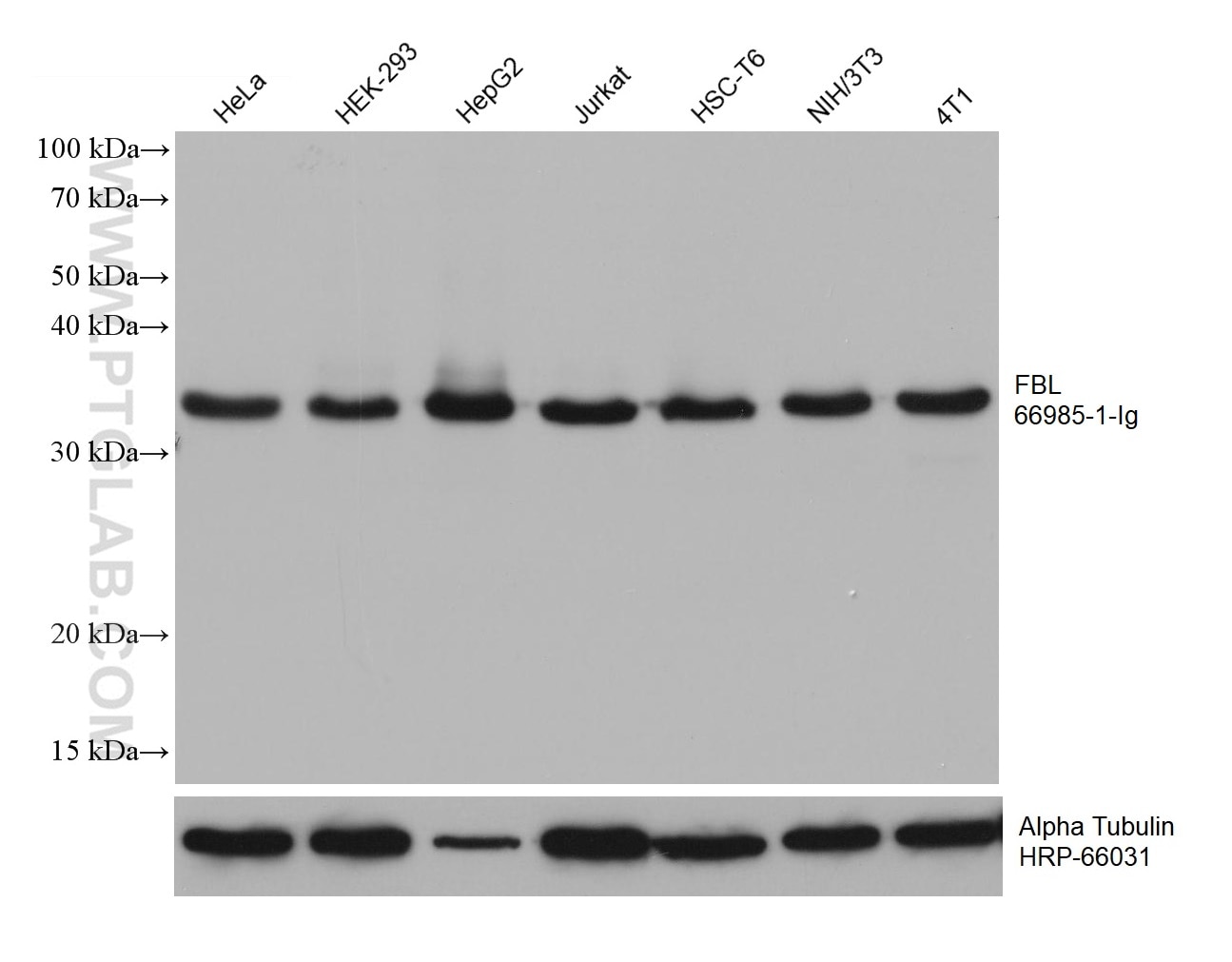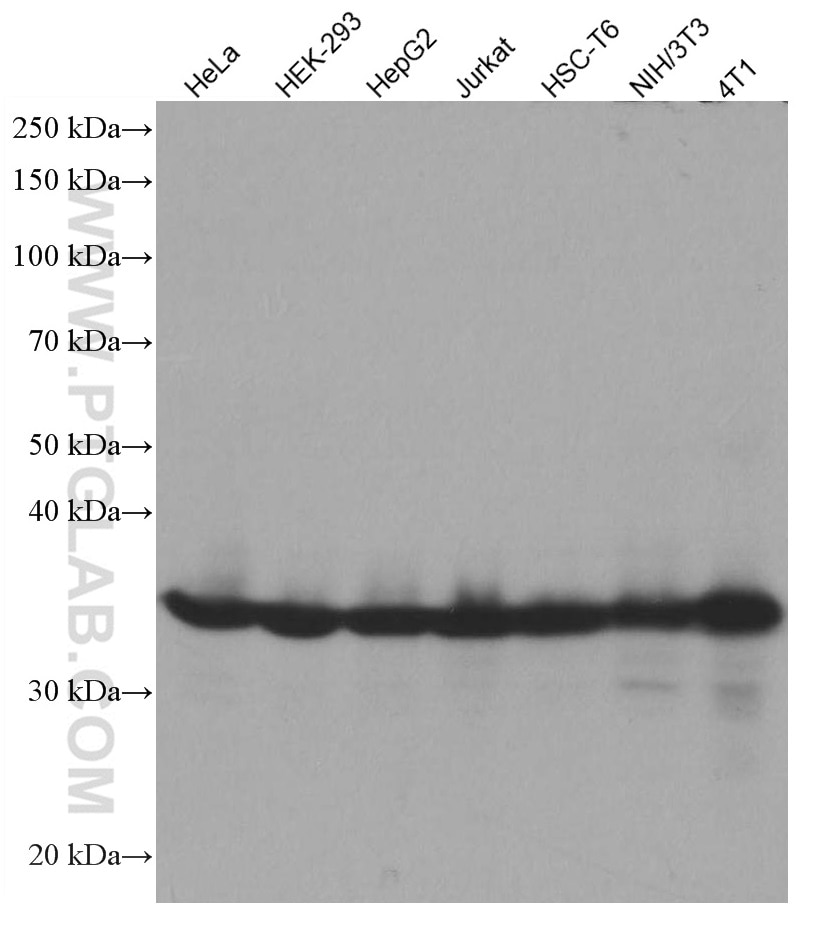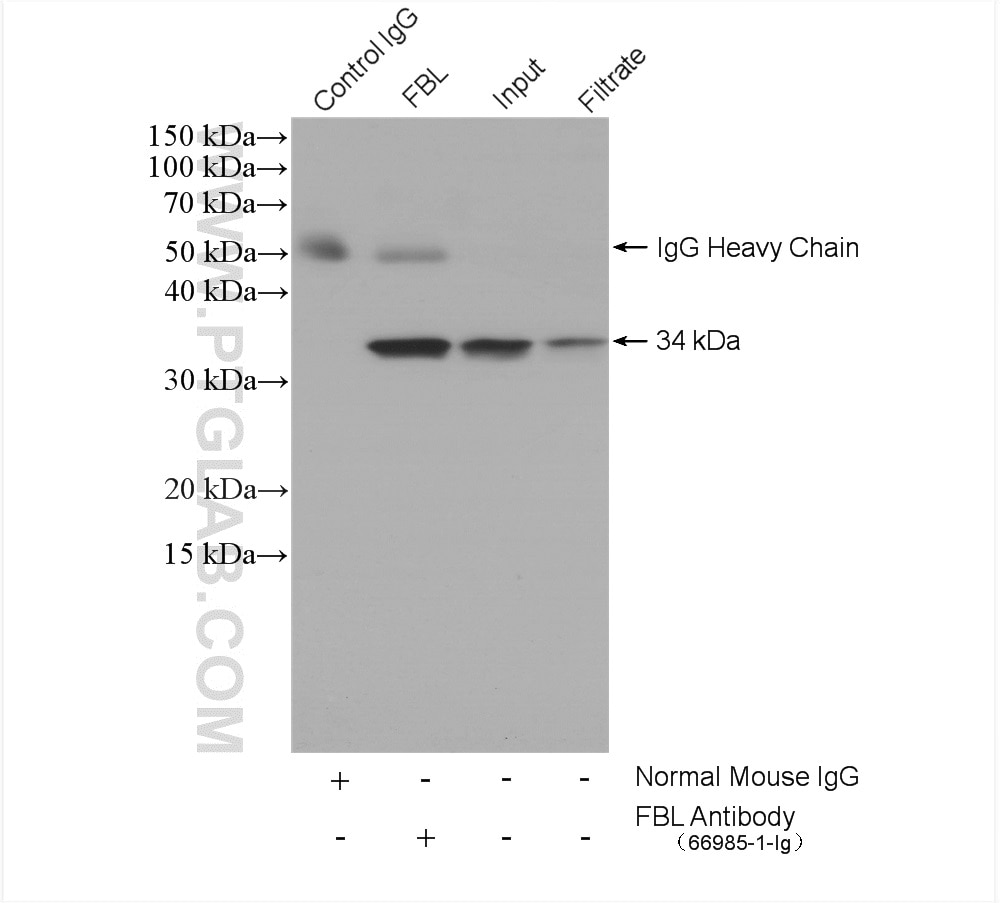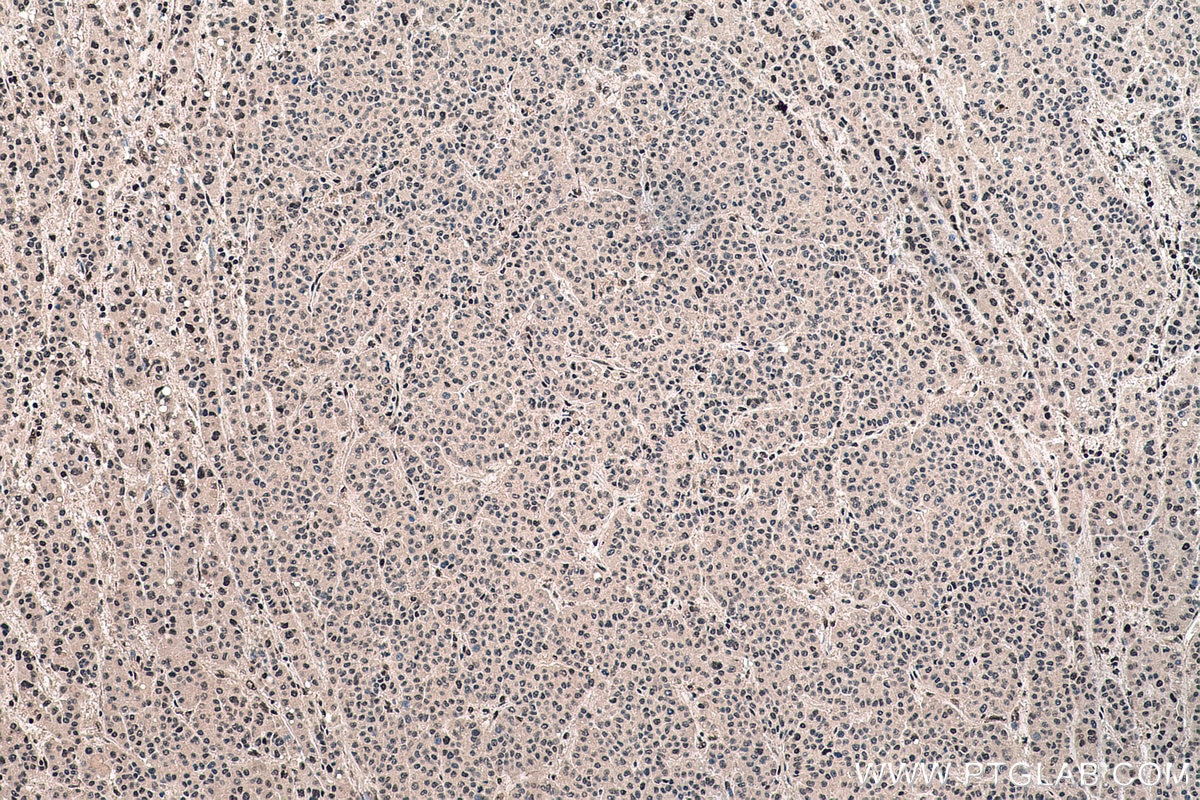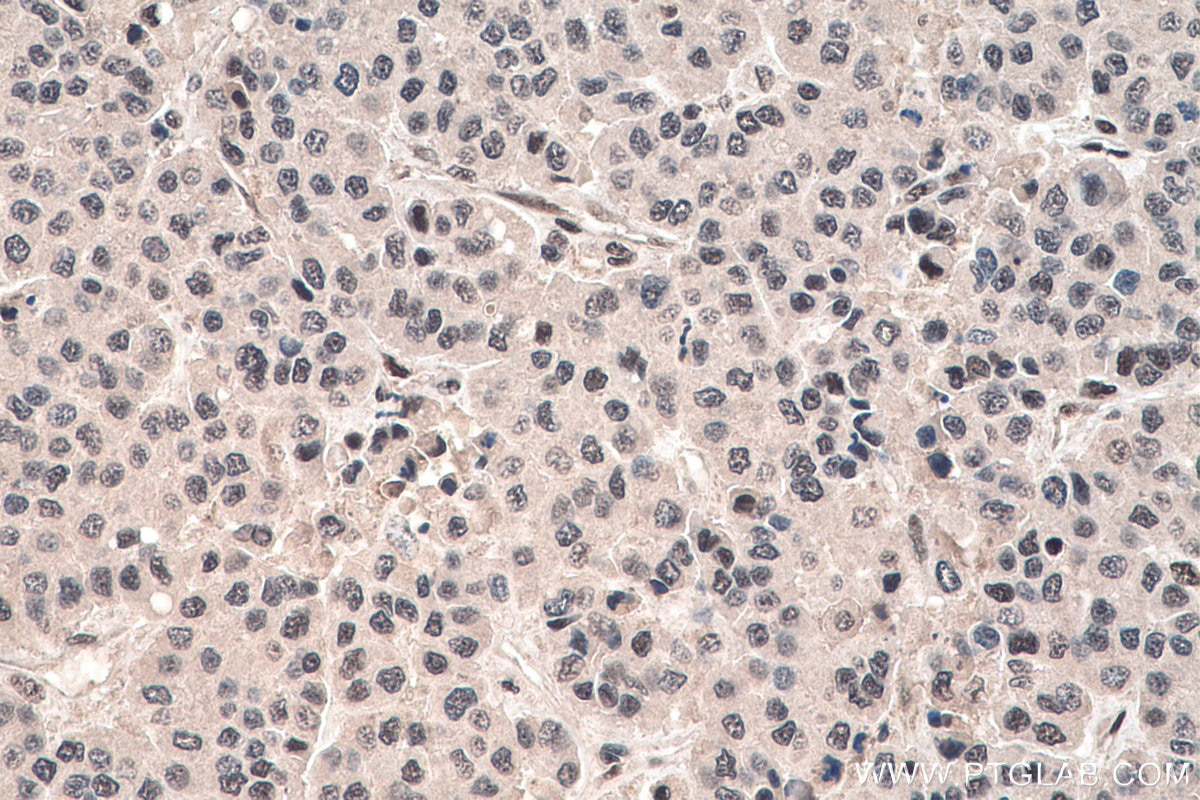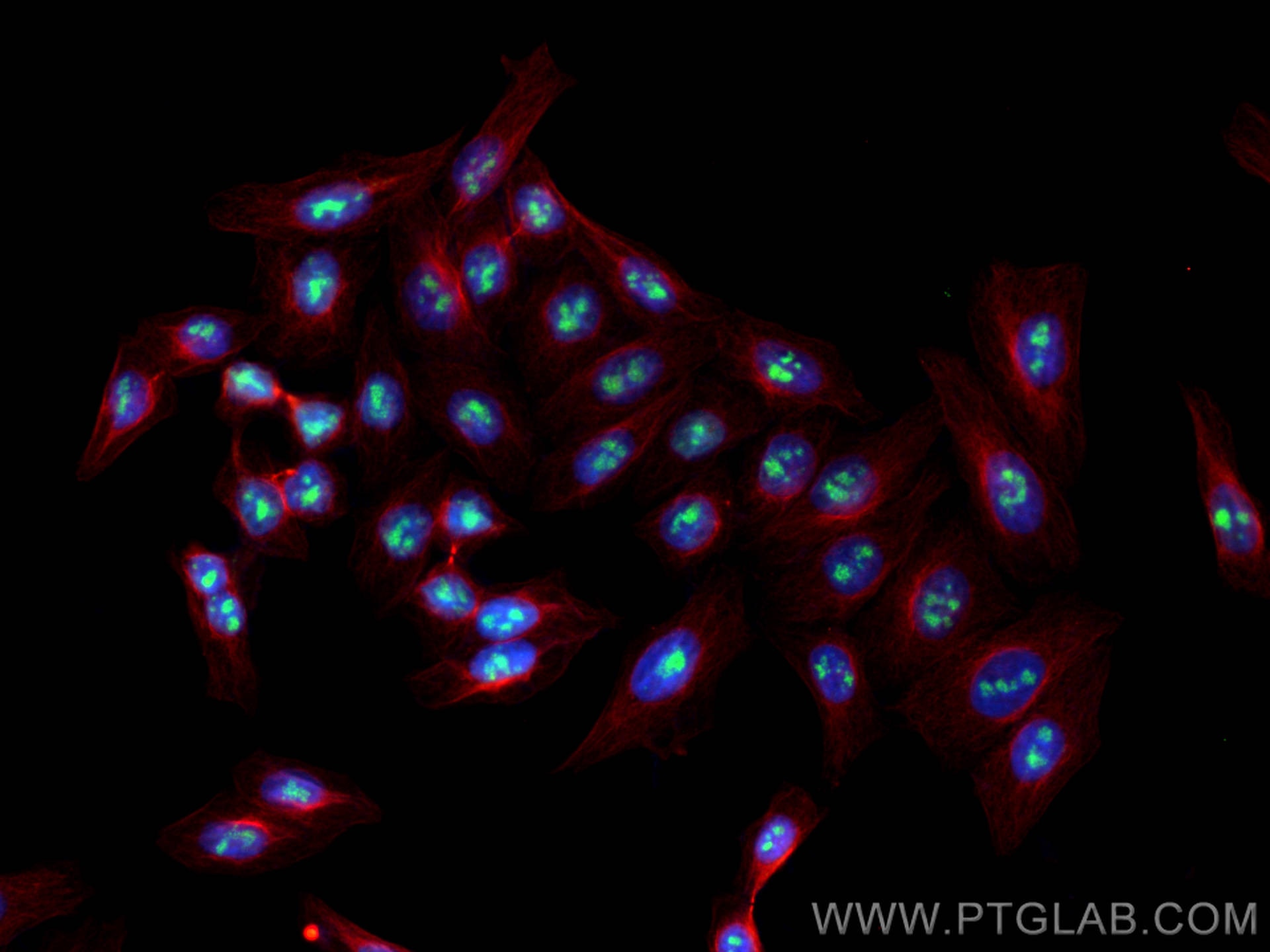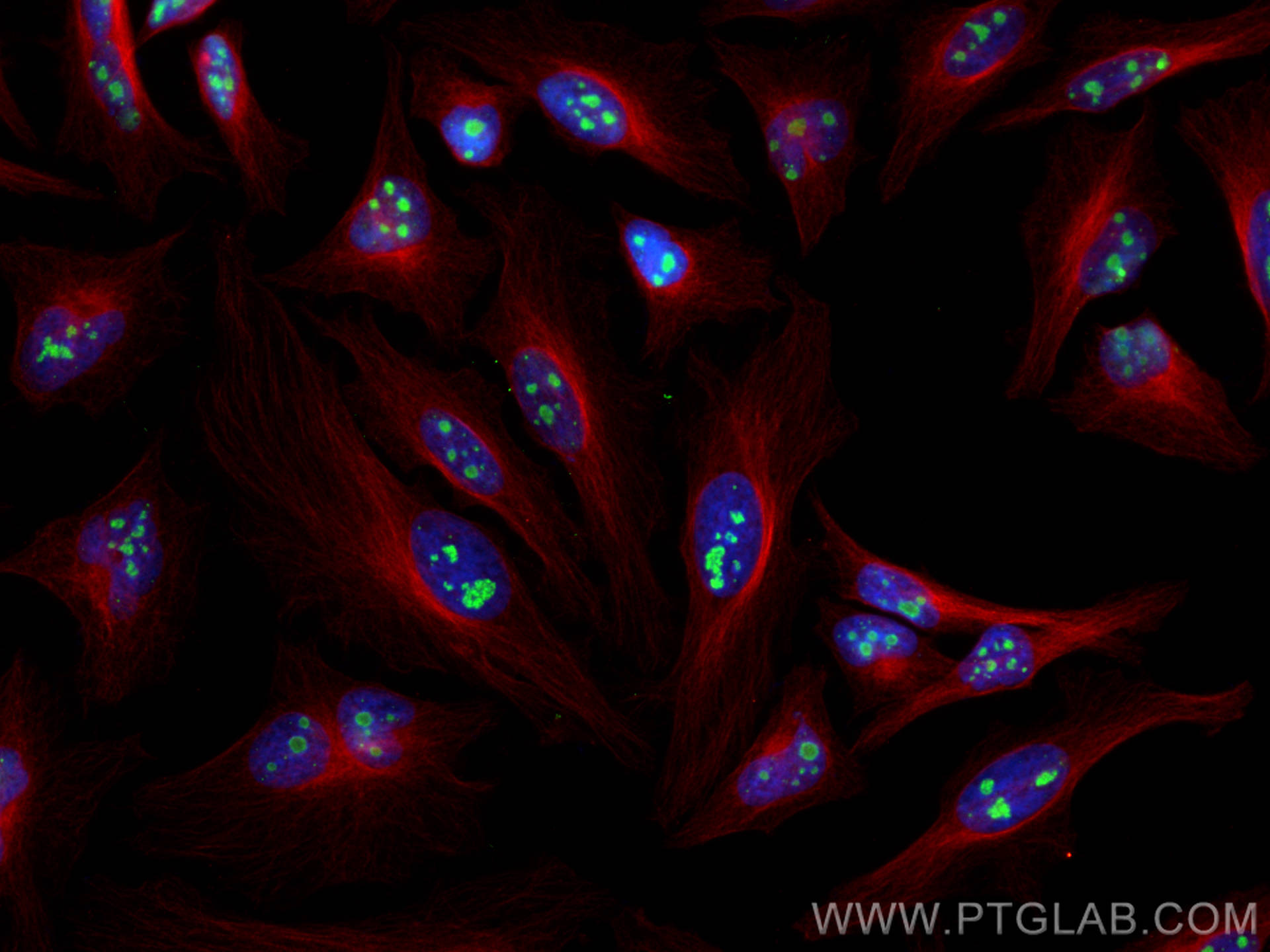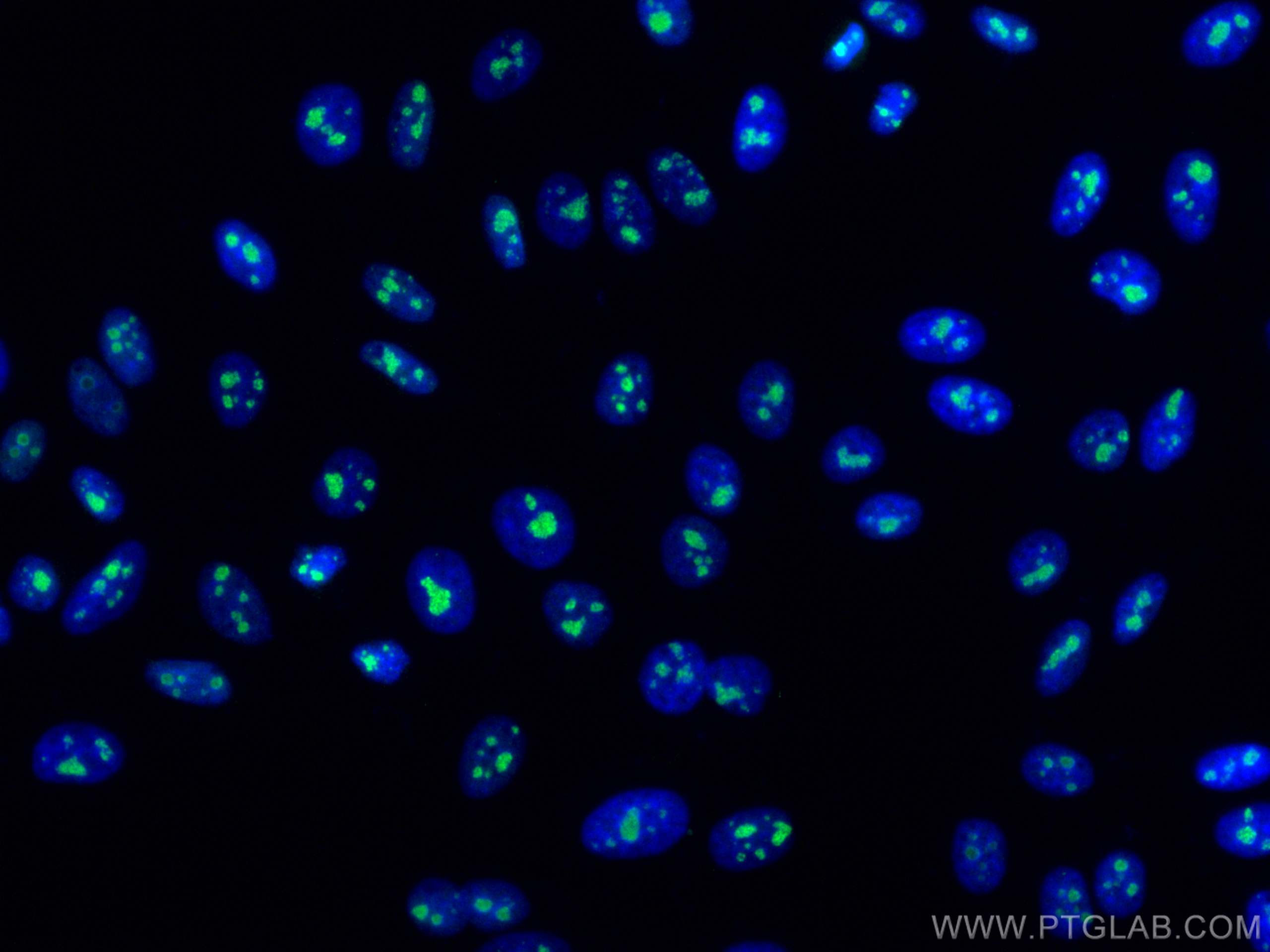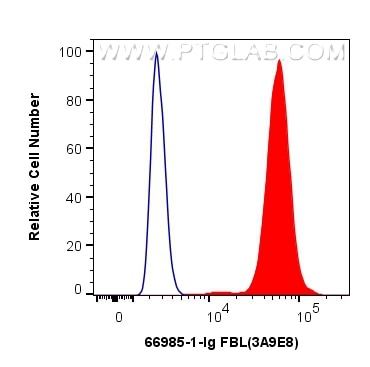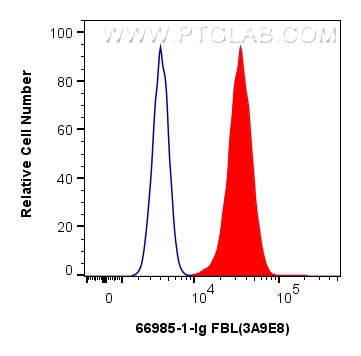FBL Monoklonaler Antikörper
FBL Monoklonal Antikörper für WB, IHC, IF/ICC, FC (Intra), IP, ELISA
Wirt / Isotyp
Maus / IgG1
Getestete Reaktivität
human, Maus, Ratte
Anwendung
WB, IHC, IF/ICC, FC (Intra), IP, RIP, ELISA
Konjugation
Unkonjugiert
CloneNo.
3A9E8
Kat-Nr. : 66985-1-Ig
Synonyme
Geprüfte Anwendungen
| Erfolgreiche Detektion in WB | HeLa-Zellen, 4T1-Zellen, HEK-293-Zellen, HepG2-Zellen, Jurkat-Zellen, NIH/3T3-Zellen |
| Erfolgreiche IP | HeLa-Zellen |
| Erfolgreiche Detektion in IHC | humanes Leberkarzinomgewebe Hinweis: Antigendemaskierung mit TE-Puffer pH 9,0 empfohlen. (*) Wahlweise kann die Antigendemaskierung auch mit Citratpuffer pH 6,0 erfolgen. |
| Erfolgreiche Detektion in IF/ICC | HeLa-Zellen, HepG2-Zellen |
| Erfolgreiche Detektion in FC (Intra) | HepG2-Zellen, HeLa-Zellen |
Empfohlene Verdünnung
| Anwendung | Verdünnung |
|---|---|
| Western Blot (WB) | WB : 1:5000-1:50000 |
| Immunpräzipitation (IP) | IP : 0.5-4.0 ug for 1.0-3.0 mg of total protein lysate |
| Immunhistochemie (IHC) | IHC : 1:1000-1:4000 |
| Immunfluoreszenz (IF)/ICC | IF/ICC : 1:200-1:800 |
| Durchflusszytometrie (FC) (INTRA) | FC (INTRA) : 0.40 ug per 10^6 cells in a 100 µl suspension |
| It is recommended that this reagent should be titrated in each testing system to obtain optimal results. | |
| Sample-dependent, check data in validation data gallery | |
Veröffentlichte Anwendungen
| WB | See 5 publications below |
| IF | See 5 publications below |
| RIP | See 1 publications below |
Produktinformation
66985-1-Ig bindet in WB, IHC, IF/ICC, FC (Intra), IP, RIP, ELISA FBL und zeigt Reaktivität mit human, Maus, Ratten
| Getestete Reaktivität | human, Maus, Ratte |
| In Publikationen genannte Reaktivität | human |
| Wirt / Isotyp | Maus / IgG1 |
| Klonalität | Monoklonal |
| Typ | Antikörper |
| Immunogen | FBL fusion protein Ag8841 |
| Vollständiger Name | fibrillarin |
| Berechnetes Molekulargewicht | 321 aa, 34 kDa |
| Beobachtetes Molekulargewicht | 34 kDa |
| GenBank-Zugangsnummer | BC019260 |
| Gene symbol | FBL |
| Gene ID (NCBI) | 2091 |
| Konjugation | Unkonjugiert |
| Form | Liquid |
| Reinigungsmethode | Protein-G-Reinigung |
| Lagerungspuffer | PBS with 0.02% sodium azide and 50% glycerol |
| Lagerungsbedingungen | Bei -20°C lagern. Nach dem Versand ein Jahr lang stabil Aliquotieren ist bei -20oC Lagerung nicht notwendig. 20ul Größen enthalten 0,1% BSA. |
Hintergrundinformationen
Fibrillarin (Fbl) is an essential nucleolar protein that plays an essential role in ribosome biogenesis and more particularly in the methylation of ribosomal RNAs and rDNA histones. FBL is highly expressed in various cancers and correlates with poor survival outcomes in cancer patients,such as hepatocellular carcinoma(PMID: 33376525). Knockdown of FBL sensitizes tumor cells and xenografts to DNA crosslinking agents, and leads to homologous recombination-mediated DNA repair defects(PMID: 37489617).
Protokolle
| PRODUKTSPEZIFISCHE PROTOKOLLE | |
|---|---|
| WB protocol for FBL antibody 66985-1-Ig | Protokoll herunterladen |
| IHC protocol for FBL antibody 66985-1-Ig | Protokoll herunterladenl |
| IF protocol for FBL antibody 66985-1-Ig | Protokoll herunterladen |
| IP protocol for FBL antibody 66985-1-Ig | Protokoll herunterladen |
| STANDARD-PROTOKOLLE | |
|---|---|
| Klicken Sie hier, um unsere Standardprotokolle anzuzeigen |
Publikationen
| Species | Application | Title |
|---|---|---|
Gastroenterology Nucleolar HEATR1 upregulated by mTORC1 signaling promotes hepatocellular carcinoma growth by dominating ribosome biogenesis and proteome homeostasis | ||
Mol Cell lncRNAs maintain the functional phase state of nucleolar prion-like protein to facilitate rRNA processing | ||
BMC Biol A pair of long intergenic non-coding RNA LINC00887 variants act antagonistically to control Carbonic Anhydrase IX transcription upon hypoxia in tongue squamous carcinoma progression | ||
Thorac Cancer LncRNA FAM83A-AS1 promotes lung adenocarcinoma progression by enhancing the pre-mRNA stability of FAM83A. | ||
Cell Death Discov Protein expression of nucleolar protein 12 in the retina and its implication in protection of retina from UV irradiation damage | ||
Nat Commun NAP-seq reveals multiple classes of structured noncoding RNAs with regulatory functions |
